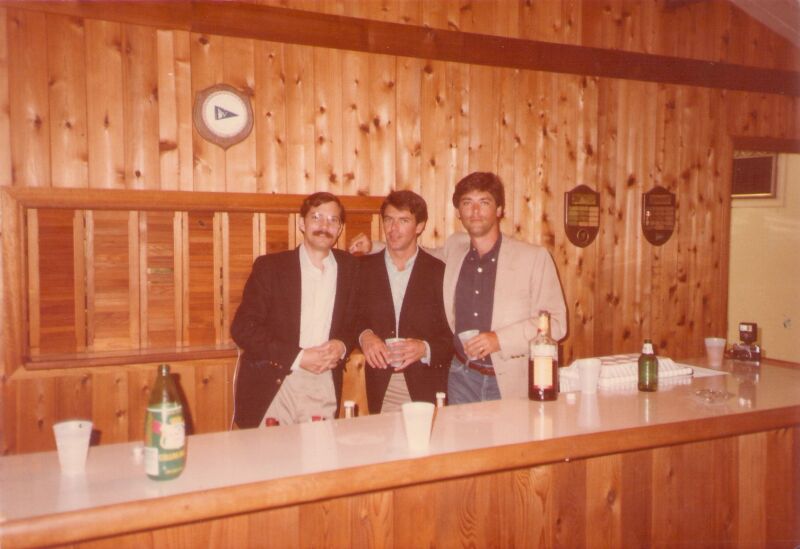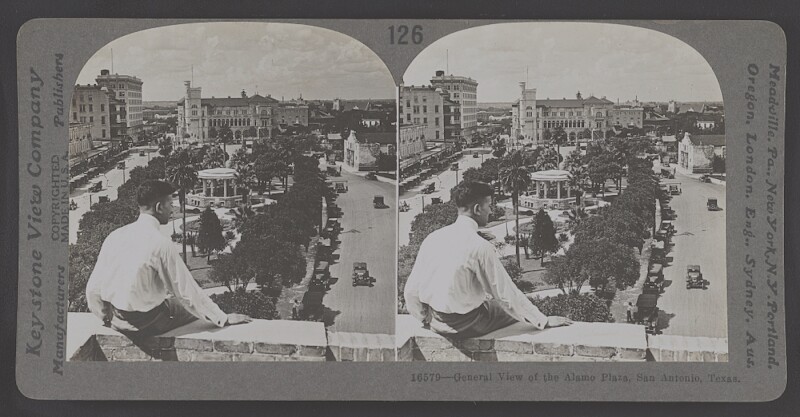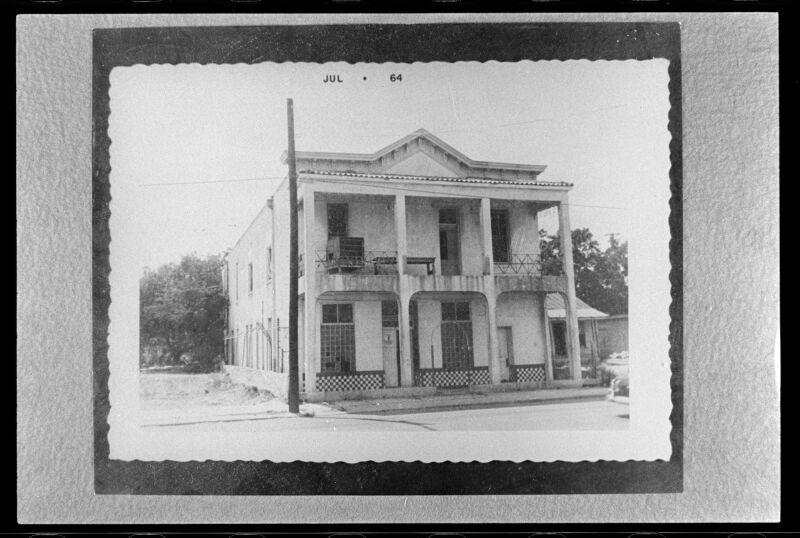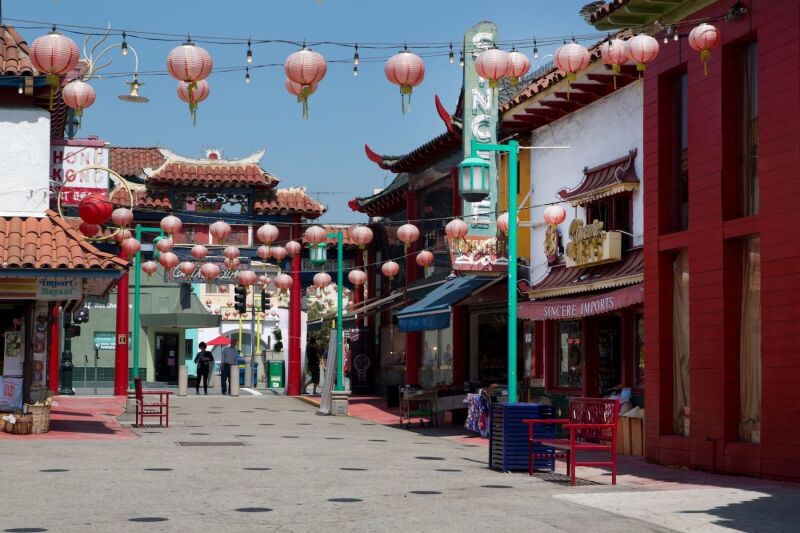I live in Los Angeles, and when people ask me where I’m from, many are surprised to learn I was born and raised in Texas—most assume I’m a native Californian. “Asian American” plus “from the South” just doesn’t compute. I can hardly blame them though. For a long time, I didn’t feel like I belonged in Texas either.
My father is a white American and my mother is benshengren Taiwanese, a term used to describe people who’ve lived in Taiwan for hundreds of years before Chinese Nationalists fled to the island from the mainland in 1949. I like to think of myself as a living, breathing ambiguous image—those illustrations that could either be a duck or a bunny depending on how you look at them. White people often interpret me as Asian while Asian people often see me as white, or at the very least, puzzlingly ethnically ambiguous.
I was born and raised in San Antonio, about an hour’s drive south of Austin. Perhaps most famous for being the home of the Alamo, San Antonio is a military town, and there are several bases in and around the area, including Fort Sam Houston, Camp Bullis, and Lackland Air Force Base, the latter being where Johnny Cash underwent basic training during his brief Air Force career. It’s a sleepy place, and it’s where my parents met in the 1980s at the Chinese restaurant my aunt owned and where my mom worked as a waitress for more than 30 years.

The Hamilton brothers from left to right: Patrick, Bob (my dad), and Luke.
Photo courtesy of Mae Hamilton
My dad was born in Madison, Wisconsin, but grew up in the piney wood forests of small town East Texas, where he spent his childhood tramping through the thick underbrush with a coon dog, smoking grape vines, and “riding the pines”—climbing to the top of a spindly tree, grabbing onto its crown, pulling it down to the ground with his weight, and then jumping off before it snaps up. His family moved to San Antonio when he was a teenager. He’d often spend afternoons dropping acid at the airport, watching the planes come and go from places he’d never been before. He hitchhiked around the country for a year in his 20s, but eventually settled down in the place he’d always known as home: Texas.

My mom worked at my aunt’s restaurant for more than 30 years as a waitress.
Photo courtesy of Mae Hamilton
My mother had a much different upbringing. The third youngest of eight children, she grew up in a shanty town in Taipei near the banks of the Tamsui River where the 10-member family shared a two-story shack that was smaller than a standard American bedroom. Once, a policeman came by demanding a bribe to overlook their illegally built home, and when her eldest sister refused to pay, he knocked down their house with a single, swift kick. Eventually it would be seized by the government and bulldozed. The place where they once lived is now a busy boulevard.
My father has never doubted that he belongs in Texas, but for my mother, carving out a place for herself in the state is an ongoing, Sisyphean task. When I was little, she used to take night classes at the local middle school to improve her English. Nowadays, she practices her language skills using an online program. But she still doesn’t feel comfortable speaking to strangers on the phone for fear that they might not understand her. She doesn’t drive on the interstate because she doesn’t think she’ll be able to read the signs quickly enough as they whiz by at 75 miles per hour. And if she needs to see a new doctor, she’ll ask me or my dad to go with her to fill out the intake forms. Growing up with two parents who had such radically different upbringings left me feeling slightly adrift somewhere between two places and cultures, not quite belonging to one or the other.

My mother’s family saying goodbye to my eldest aunt (draped in the leis) before she departed for the United States. My mother is the third from the left.
Photo courtesy of Mae Hamilton
As a kid, my universe revolved around my aunt’s restaurant, one of the few places that served Chinese food in the city. When I was a toddler, I’d run between tables piled high with egg rolls, broccoli beef, and General Tso’s chicken while tripping over an apron that was still too big for me to wear. While my Taiwanese uncle ran the show, one of his sous chefs was a Mexican man nicknamed Pato (Spanish for duck) for his waddle-like walk—he dressed in Guns N’ Roses and Korn T-shirts every day. The prep cook was a tall and wiry Vietnamese man, and the dishwasher was an older Indigenous Mexican woman who only spoke her native tongue and a little Spanish. She liked to crochet during lunch breaks.
I was closest with the waitresses. Suk, Penny, and Grace were all Korean women who’d come to America after marrying (and divorcing) servicemen. They’d take care of me on their days off while my mom worked and made me Korean food like doenjang jjigae, gamjatang, and banchan. Another waitress, Wendy, had escaped civil war and gang violence in El Salvador and had three children who ended up becoming my childhood friends. But my idol was Sandy, who was in her 20s and—I thought—the most beautiful person I would ever see in my life. She rolled her r’s even when she spoke English, brought me gifts of De la Rosa Mazapán from Mexico, penciled in a Marilyn Monroe–style beauty mark on her cheek, and wore her honey brown hair in a bun. I always begged her to help me put mine up too.

Being helpful at the restaurant.
Photo courtesy of Mae Hamilton
“You know,” she said as she smacked her gum and helped me work my hair into a ponytail. “I think you’re going to marry an older man when you grow up.”
The old saying goes that it takes a village to raise a child, and the restaurant staff were my glorious, motley village of people from all around the globe who’d come to Texas seeking brighter futures. This was my community before I understood what community was. Inside my aunt’s restaurant, people from different backgrounds, places, and creeds worked in harmonious unison to get steaming plates of moo shu pork, vegetarian tofu, and Peking duck out to customers. Things outside the restaurant’s scarlet red front doors, however, were a different story.
All Mixed Up
During my childhood, San Antonio was not a very Asian city. Census data from 2000, when I would have been six, indicates that roughly 65 percent of the population was Latino, 24 percent were white, and 7 percent percent were Black—about 3 percent of the city identified as Asian or Pacific Islander. I grew up on the Latino westside, and despite not living in the district, I attended Alamo Heights, the old money neighborhood in town whose nickname is “Alamo whites.”

San Antonio is best known for the Alamo and its surrounding plaza.
Photo courtesy of the Library of Congress
As a kid, it seemed like all the women living there had big blonde hair and their husbands had various degrees of numbers attached to their last name. I desperately wanted to fit in with my classmates, but I was the only person of Asian descent in my class who wasn’t adopted. Probably most importantly, I was poor in comparison to my peers—and didn’t have a single Juicy Couture tracksuit to my name. One time when I wore cowboy boots to school, a boy curled up his lip at me and sneered, “Asians and cowboy boots don’t mix.”
Outside of the classroom, I didn’t see myself reflected in the larger story of Texas, either, a theme that would continue all throughout my young adulthood. But in 2015, when I was about 20 years old, I saw an article in the local newspaper titled “S.A. Once Home to State’s No. 1 Chinese Community.” In 1917, General John J. Pershing brought more than 500 Chinese refugees from Mexico to San Antonio. They had aided the United States Army during their (unsuccessful) search for Pancho Villa and feared they would be persecuted if they stayed in Mexico—and for good reason. Only a few years earlier, 303 Chinese people were killed in Torreón, Coahuila, in a brutal, racially motivated attack.

The building that once held the San Saba Chinese School, the first Chinese language institution in San Antonio.
Photo courtesy of the Library of Congress
After they arrived in the U.S., the “Pershing Chinese” (as they came to be known), settled in the area around Fort Sam Houston where they worked as laborers, cooks, waiters, and laundrymen. More than half stayed in the area and many ended up marrying local Mexican women. They raised families, opened local businesses, and established San Antonio’s original Chinese school, the San Saba Chinese School.
Houston is now known as the Chinese epicenter of the state, but before Asian immigration increased in the 1980s, that title belonged to San Antonio. Here, then, was evidence that people like my family had existed in this place long before we came along. It was a small glimmer of hope that I was exactly where I should be.

The San Antonio Chinese Community’s display at the city’s 1982 Battle of Flowers Parade.
Photo courtesy of the Library of Congress
When I was 21, I decided it was time to spend some time in Taiwan. I accepted an internship in Tainan and spent a summer there while attending the University of Texas at Austin. This wasn’t my first time in the country. My family visited nearly every year, and I’d spent a month the previous summer teaching English in Hsinchu. But it would be the longest time I’d ever spent on the island—and the longest I’d ever been away from home.
I’ve never felt more welcome or at home than I did that summer. The auntie from whom I bought fan tuan (a breakfast dish consisting of glutinous rice wrapped around pickled radish, pork floss, and a Chinese cruller) and sweet doujiang (soy milk) would greet me by name every morning and even tried to set me up with her nephew. I loved that I didn’t need to act sheepish or say sorry to anyone when I ordered the duck necks, tongues, and other bits of offal at the lu wei takeout that weren’t even an option on the menu back home. When I would meet up with my coworkers at the night market after work, they would insist that I stay in Taiwan. I wanted to.

My mom and I somewhere in Taipei’s Neihu neighborhood.
Photo courtesy of Mae Hamilton
But it was also very obvious I would never completely fit in in Taiwan either. One time when I was getting lunch with a friend in the small northern town of Jiufen, the waitress enthusiastically told me, “Your Chinese is very good for a Japanese person!” And when strangers chatted with me, they’d ask, “Where are you from?” It wasn’t meant maliciously. But the meaning was clear—I don’t see people that look like you around here very often.
During those turbid college years on the cusp of true adulthood, my life felt like a really bad Dr. Seuss book: I don’t fit in here, I don’t fit in there, I don’t fit in anywhere! I’d spent years relearning Mandarin Chinese and immersing myself in Taiwanese history and culture, thinking that I could find home halfway across the globe in the South China Sea. But as I sat on my dormitory bed alone in Tainan one evening as a typhoon howled outside and slapped wet palm leaves against my window, I thought, “What if I just stopped trying so, so hard to fit in all the time? And just was?”
I found comfort in an unexpected place: outlaw country music. I can shake it to Brooks and Dunn’s “Boot Scootin’ Boogie” and George Strait’s “Adalida” as any good Texan should, but when I say outlaw country music, I mean the down and out, dark, and sorry stuff that you listen to while you’re nursing a beer and wiping a tear from your cheek. The kind of thing you put a quarter in the jukebox for when you’re the last customer at the bar in a smoky saloon. Guy Clark, Terry Allen, Doug Sahm, Townes Van Zandt—musicians who wore their hair long, were into music and poetry, and were full of creative energy. They knew they didn’t quite fit into Texas’ rigid social structure and, frankly, didn’t give a damn. They were weirdos and drifters who wandered on the fringes of Texas society boldly and unabashedly—I’m especially fond of Townes, who composed heartfelt ballads about Mexican bandits, wayward prostitutes, and hopeless junkies.
I’d long been a fan of folk and country music and singer songwriters thanks to a high school obsession with Bob Dylan, but this was different. As I listened to the songs of these musicians who still fiercely loved the place that they were from—even if they didn’t quite fit in there—I felt a certain kinship. The reality is that Texas has always been the home of kooks, oddballs, musicians, burnouts, and artists as much as it has been the home of cowboys, football stars, and megachurch pastors. The message was simple, but I received it loud and clear: It’s OK to be different. In fact, it’s a special thing that takes a bit of bravery.
After I came back from Taiwan, I went on a road trip and noticed that in every small Texas town, no matter how minuscule the population was, there always seemed to be at least one Chinese restaurant. How many other people were there in the world who felt like me? People who weren’t relegated to being a historical anecdote but, rather, were right here, right now, alive in this very moment?
It was kind of like that scene in The Wizard of Oz when the film’s moody sepia tones bloom into brilliant Technicolor when Dorothy finds the yellow brick road. Of course, I couldn’t be the only one who’d ever felt they’d grown up in this uneasy liminal space between two cultures—there were probably people like me in each of these tiny places who’d thought they were among the only Asian people in the whole state when they were kids too. I was nearly in tears pointing this out to my mother. She simply shrugged and said, “We are everywhere.”
It was a very outlaw country thing of her to say.
California Sun
I met my husband—that older man Sandy had prophesied so long ago—during my last year of college. After a little less than a year of knowing each other, but very much in love, we moved to Los Angeles together.

Los Angeles, where I live now, has a much more established Chinese community with a Chinatown that was founded in the mid-1800s.
Photo courtesy of the Library of Congress
During the past five years I’ve lived in California, I’ve noticed a certain attitude when it comes to Texas. It’s an aura of unfamiliarity and foreignness. There are undertones of suspicion and fear. Issues like Texas’s strict abortion trigger laws, the rights of trans people, humanitarian migrant crises, and, of course, the tragedy at Uvalde dominate headlines about Texas. I’d had my existential battle with my identity in Taiwan, but living in a new state allowed me to see Texas in a different light. Being homesick spurred me to read as much as I could about Texas and to write about it in my work. My home state is undoubtedly a messy and complicated place. But it can be a beautiful one as well.
For one, Texas is actually the second most diverse state in the nation, just behind California. People who’ve immigrated to Texas comprise approximately 17 percent of the state’s population. According to recent census data, the Latino population has overtaken white, non-Latino Texans in numbers, measuring in at 40 percent and 39 percent of the state, respectively. In August 2021, the Texas Tribune reported that the Lone Star State gained the most residents of any state since the last census in 2010, and over 95 percent of that growth could be attributed to Texas’ Latino, Black, and Asian populations, who all significantly outgrew white residents—Asian Texans, who make up just 5.5 percent of the state, grew at the fastest pace in the state, adding 613,092 people since 2010. Houston has been making headlines nationally for being the most diverse place in the United States, according to publications like the New York Times and the Los Angeles Times.
But even before modern immigration trends, Texas was already a colorful place. Before Texas was Texas, it was the Mexican state of Coahuila y Tejas, and the state is full of Tejano families who have called the land home for hundreds of years before current borders were even dreamt of. Black Texans, too, have contributed incalculably to both the state and national culture. The great cattle drives of the late 1800s that made the state rich were predominantly staffed by Black and Mexican rancheros (one in four cowboys was Black), and Bass Reeves, the legendary deputy U.S. marshal whose story would inspire the tale of the Lone Ranger, was Black. At the Alamo, people of both Black and Mexican descent would famously defend the San Antonio mission alongside Davy Crockett and James Bowie.

Texas Ranger Bass Reeves (far left, middle row) inspired the legend of the Lone Ranger.
Photo courtesy of Wikimedia Commons
But all of that is hard to explain to someone concisely in reply to a raised eyebrow and a comment of, “From Texas, huh?” How do you begin to describe to someone the complexities that involve loving a place that might not completely love you back? How do you reconcile all of these feelings with Texas’ not-so-distant history of lynchings, hate crimes, and xenophobic stances that the state government has adopted against people of color?
The picture I have of Texas in my head is one that is rich and multitudinous. It’s a dream-like place populated with outlaw country musicians, echoes of a past that demands to not be forgotten, and a future that could be pregnant with hope and change, as the state becomes ever more diverse with immigrants with each passing year. It’s a vision that I fear is not reflected in the legislature.
But I think about how sometimes the harder something tries to push you away, the harder you should wrap your arms around it and hug back, if nothing for a lot of love and a little bit of spite. Maybe write a song or two about it in the saloon at night—an essay even.











